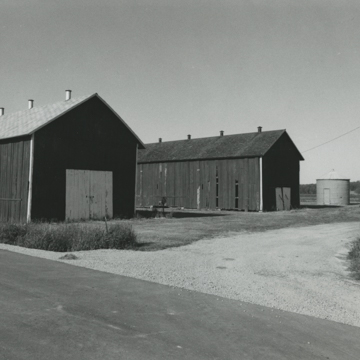Tobacco became an important crop in southern Wisconsin during the Civil War, when tobacco from the Southern states was unavailable. Dane County especially stood at the center of tobacco production between the 1880s and the 1930s, when Depression-era farm programs placed limits on agricultural expansion. Most of those who grew tobacco in this region were Norwegian immigrants, who had learned how to do so as day laborers or sharecroppers for tobacco growers who had come to Wisconsin from the South. The broad-leaf tobacco grown here was used to make the outer wrappers for cigars.
Tobacco was dried or cured in ventilated sheds. These are generally narrow buildings, usually more than fifty feet long and about twenty-five feet wide, commonly constructed of lumber siding placed on a pole framework set directly on the ground with little or no foundation. Since ventilation is the key to air-drying, the siding consists of vertical boards in which every other slat is a ventilator. Some slats swing out on hinges, some pivot at the top to slide sideways, and others pivot out at a point about one foot from the top. The first two types can be seen in this set of barns. Inside, the wooden frames that support each structure incorporate two cross timbers: a collar beam near the eaves and a tie beam at about shoulder height. Harvested leaves are allowed to wilt, and the stalks are hung on wooden laths laid across these beams. For two or three months, the ventilators are manipulated periodically to dry and cure the leaves, which are then stripped and packed for shipping.
It is unclear when this collection of tobacco sheds was built along the highway—perhaps in the 1880s, when the area’s tobacco acreage doubled to meet skyrocketing demand and prices.


